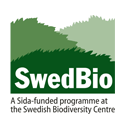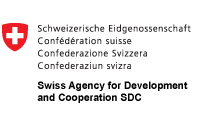Click on images to enlarge
/thumbs/imperata_cylindrica_01_sml.jpg)
leaf sheath with hairs (Photo: James H. Miller, USDA Forest Service, Bugwood.org)
/thumbs/imperata_cylindrica_02_sml.jpg)
plant base and rhizomes (Photo: James H. Miller, USDA Forest Service, Bugwood.org)
/thumbs/imperata_cylindrica_03_sml.jpg)
seed heads (whitish plumes) and flower heads (Photo: James H. Miller, USDA Forest Service, Bugwood.org)
/thumbs/imperata_cylindrica_04_sml.jpg)
infestation (Photo: James H. Miller, USDA Forest Service, Bugwood.org)
/thumbs/imperata_cylindrica_05_sml.jpg)
plants (Photo: Charles T. Bryson, USDA Agricultural Research Service, Bugwood.org)
/thumbs/imperata_cylindrica_06_sml.jpg)
flowering (Photo: Nancy Loewenstein, Auburn University, Bugwood.org)
Scientific name
Imperata cylindrica (L.) Beauv.
Synonyms
Imperata arundinacea Cirollo; Lagurus cylindricusL.
Common names
Cogon grass, cotton wool grass, silver spike, sword grass, ialang, lusanke (Luganda), mtimbi (Kiswahili), ol'ungu (Maasai)
Family
Poaceae (Gramineae)
Origin
Pantropical - almost certainly found in all countries in the humid tropics
Naturalised distribution (global)
Imperata cylindrica is naturalised throughout the tropics and warm temperate locations although it has a limited distribution tropical America.
Introduced, naturalised or invasive in East Africa
Imperata cylindrica is invasive in parts of Kenya and Tanzania (A.B.R. Witt pers. obs.) and Uganda (Lyons and Miller 1999).
Habitat
Imperata cylindrica is found in a wide range of habitats including grassland, cultivated annual crops, plantations, abandoned farm land, road and railway embankments, reclaimed mined areas, pine and hardwood forests, recreational areas and deforested areas from sea level to 2700 m and rainfalls of 500-5000 mm/year.
Description
Imperata cylindrica is a long-lived (perennial) rhizomatous grass (spread by creeping stems - rhizomes). Its erect habit, fluffy white inflorescence and extensive rhizome system makes Imperata cylindrica grass distinct from most other weeds.
It grows from 0.6-3 m tall. The leaves are about 2 cm wide near the base of the plant and narrow to a sharp point at the top; the margins are finely toothed and are embedded with sharp silica crystals. The main vein is a lighter colour than the rest of the leaf and tends to be nearer to one side of the leaf. The upper surface is hairy near the base of the plant while the underside is usually hairless. Roots are up to 1.2 m deep, but 0.4 m is typical in sandy soil.
Reproduction and dispersal
Imperata cylindrica is a prolific seed producer with one plant capable of producing up to 3000 seeds. These are dispersed by wind over long distances. It also spreads by rhizomes (root-like stems) which can be transported by tilling equipment and in soil transport.
Similar species
Imperata cylindrica may be confused with I. brasiliensis (Brazilian satintail). I. brasiliensis differs from I. cylindrica in terms of the number of stamens per flower; I. brasiliensis has one stamen whereas I. cylindrica has two.
Economic and other uses
Imperata cylindrica has medicinal properties, can be used in construction and as a fibre and as an ornamental. Young inflorescences and shoots may be eaten cooked, and the roots contain starch and sugars and are therefore easy to chew.
Environmental and other impacts
Imperata cylindrica is a weed of 35 crops worldwide with most crops in the humid tropics affected. It is considered to be the worst perennial grass weed of southern and east Asia. Millions of hectares of farmland are abandoned because of I. cylindrica grass in West and Central Africa each year. It is also thought to negatively impact upon biodiversity as it is an inferior forage grass. I. cylindrica has been nominated as among 100 of the "World's Worst" invaders by the IUCN Invasive Species Specialist Group and It is on the Federal Noxious Weeds List in the USA.
Management
The precise management measures adopted for any plant invasion will depend upon factors such as the terrain, the cost and availability of labour, the severity of the infestation and the presence of other invasive species. Some components of an integrated management approach are introduced below.
The best form of invasive species management is prevention. As Imperata cylindrica is so widespread this is unlikely to be possible in many instances.
If prevention is no longer possible, it is best to treat the weed infestations when they are small to prevent them from establishing (early detection and rapid response). Controlling the weed before it seeds will reduce future problems. Control is generally best applied to the least infested areas before dense infestations are tackled. Consistent follow-up work is required for sustainable management.
Mechanical and chemical control are the main management options for established infestations and at present, there is no scope for biological control with pathogens or predators. Details on possible control methods for I. cylindrica are available in the CABI Invasive Species Compendium. IRRI/NRI (1996) have produced a guide to the management of I. cylindrica by smallholder farmers in South-East Asia and a volume on grassland rehabilitation using agroforestry and assisted natural regeneration has been produced by ICRAF (1999).
Legislation
Not listed as a noxious weed by the state or governments in Kenya, Tanzania and Uganda.
References
CABI Invasive Species Compendium online data sheet. Imperata cylindrica (satintail). CABI Publishing 2011. www.cabi.org/ISC. Accessed March 2011.
Dickens, R. and Moore, G.M. (1974). Effects of light, temperature, KNO3, and storage on germination of cogon grass. Agronomy Journal 66: 187-188.
ICRAF (1999). Imperata Grassland Rehabilitation using Agroforestry and Assisted Natural Regeneration. Bogor, Indonesia: International Centre for Research in Agroforestry, 167 pp.
IRRI/NRI (1996). Imperata Management for Smallholders. Polembang, Indonesia: Indonesian Rubber Research Institute, and Chatham, UK: Natural Resources Institute.
Lyons, E.E. and Miller, S.E. (eds) (1999). Invasive Species in Eastern Africa: Proceedings of a Workshop held at ICIPE, July 5-6, 1999.
Editors
Agnes Lusweti, National Museums of Kenya; Emily Wabuyele, National Museums of Kenya, Paul Ssegawa, Makerere University; John Mauremootoo, BioNET-INTERNATIONAL Secretariat - UK.
Acknowledgments
This fact sheet is adapted from The Environmental Weeds of Australia by Sheldon Navie and Steve Adkins, Centre for Biological Information Technology, University of Queensland. We recognise the support from the National Museums of Kenya, Tropical Pesticides Research Institute (TPRI) - Tanzania and Makerere University, Uganda. This activity was undertaken as part of the BioNET-EAFRINET UVIMA Project (Taxonomy for Development in East Africa).
Contact
BioNET-EAFRINET Regional Coordinator: [email protected]












